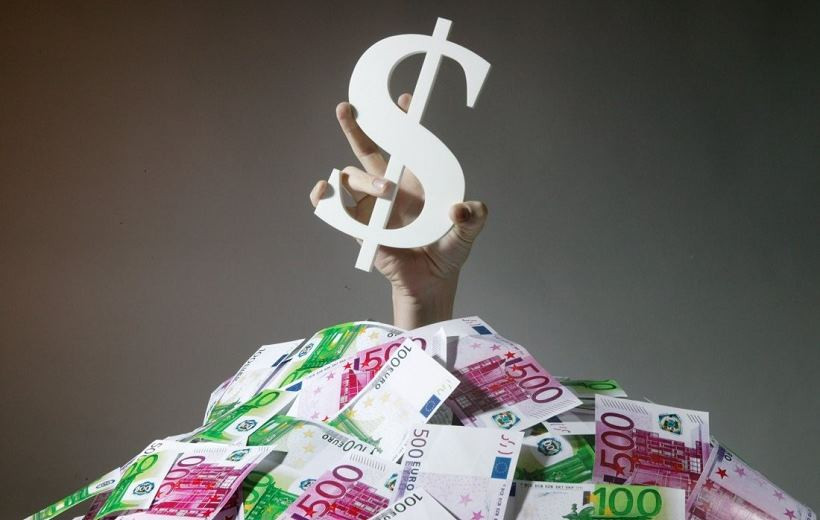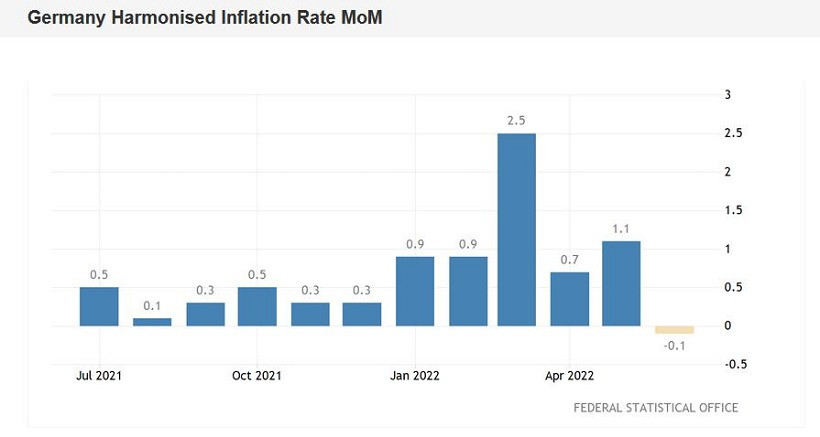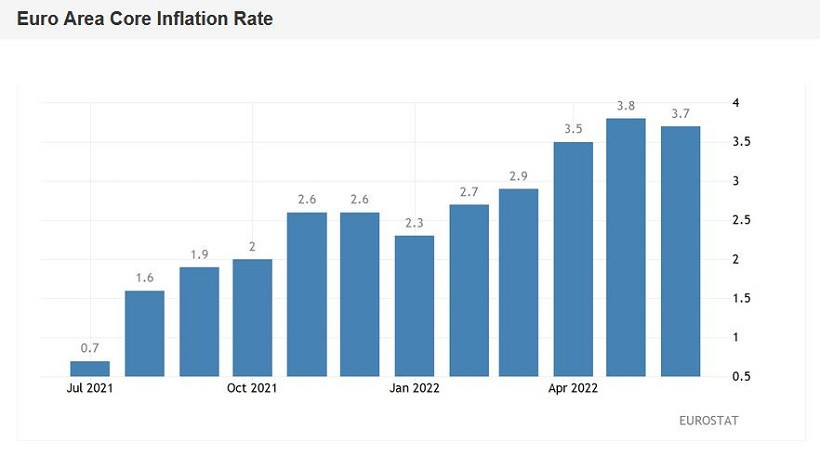The euro-dollar pair again tested the area of the 3rd figure at the end of the trading week. Such price dynamics are due to both the strengthening of the greenback and the weakening of the single currency. The rapid rise of the US dollar index, which again reached the 105th figure (for the first time since mid-June) on Friday, "redrew" the configuration of the main currency pairs of the major group. In the case of the EUR/USD pair, the latest report on the growth of inflation in the eurozone also made its contribution. The conflicting numbers of this release did not allow bulls to turn the tide in their favor. On the contrary, the report was interpreted against the euro, despite all its ambiguity. As a result, the bears seized the initiative and again appeared below the target of 1.0400, updating the two-week low along the way.

The first "alarm bells" for the euro sounded the day when data on the growth of the consumer price index in Germany were published. German inflation unexpectedly slowed down: all components of the release came out in the red zone, to the surprise of most experts. In annual terms, the overall CPI came out at around 7.6%, with an increase forecast to 8.0%. The June result unexpectedly reflected a slowdown in growth, instead of the predicted next spurt. On a monthly basis, the indicator also fell short of the forecasted values, being at 0.1% in June (after rising 0.9% in May). The Harmonized Consumer Price Index similarly came out in the red zone both in monthly and annual terms. By the way, on a monthly basis, the core index even dropped into the negative area (-0.1%) for the first time since January 2021.

The report on the growth of German inflation, as a rule, outlines the approximate trajectory of pan-European figures. Therefore, such disappointing data put pressure on the EUR/USD pair. But the price eventually managed to stay within the 4th figure, due to the base price index for personal consumption expenditures in the US (PCE), which was also disappointing. The most important inflation indicator for the Federal Reserve has been slowing down for the third consecutive month.
Price "swings" were observed throughout almost the entire week. The pair then fell to the area of the third figure, then rose to the boundaries of the 5th price level. It is noteworthy that both Fed Chairman Jerome Powell and European Central Bank President Christine Lagarde made it clear in their recent speeches that the pace of monetary tightening (by the Fed and the ECB, respectively) will depend on the dynamics of key inflationary indicators. In the case of the Fed, the choice is between a 50-point and 75-point rate hike. Whereas in the case of the ECB, a possible 50-point increase in the rate is at stake - in July or September. Given the fact that EUR/USD traders were disappointed by both German inflation and the PCE index, the price has not decided on the vector of its movement. For the development of the downward trend, the bears of the pair need to settle in the area of the 3rd figure (ideally, below 1.0360). The bulls of the pair, in turn, need to consolidate above the target of 1.0530 (the middle line of the Bollinger Bands indicator on the daily chart) in order to claim the area of the 6th figure.
The latest report on the growth of European inflation had, so to speak, a "golden share": it could support both bulls and bears of EUR/USD. But this release also left more questions than answers. The overall consumer price index once again went into the green zone, reflecting a record increase. The indicator jumped to 8.6% - this is the highest value in the entire history of observations, that is, since 1997. However, the core index (excluding volatile energy and food prices) on an annualized basis unexpectedly slowed down its growth, being at around 3.7% instead of the planned growth to 3.9%.

In the face of weak German data, this circumstance was interpreted against the euro. Adding fuel to the fire was Fabio Panetta, a member of the ECB's executive board, who said that the normalization of the ECB's monetary policy "should remain gradual." According to him, after the rate hike to zero, further adjustments "will depend on the development of the outlook." This suggests that he favors a 25-point rate hike in July and September. Whereas market expectations are more hawkish, suggesting one 50-point rate hike in the July or September meeting.
As a result, the scales tipped in the direction of the EUR/USD bears: the price renewed the two-week low, reaching 1.0373. At the same time, bears failed to overcome 5-year lows - especially after the release of the ISM manufacturing index, which fell to 53 points (the weakest result since July 2020).
Thus, EUR/USD traders faced a real puzzle this week: inflation reports somewhere surprised, somewhere disappointed, both bears and bulls of the pair. Still, the pair remains bearish, with a 75-point Fed rate hike still highly likely, while the ECB is likely to look back at German inflation and core European inflation when discussing the September outlook (a 25-point rate hike in July has already been factored into prices). Therefore, any corrective surges in the pair are still advisable to use as a reason to open short positions. The first, and so far the main target is the level of 1.0350 (the lower line of the Bollinger Bands indicator on the D1 timeframe).
Trading analysis offered by RobotFX and Flex EA.
Source



Please do not spam; comments and reviews are verified prior to publishing.